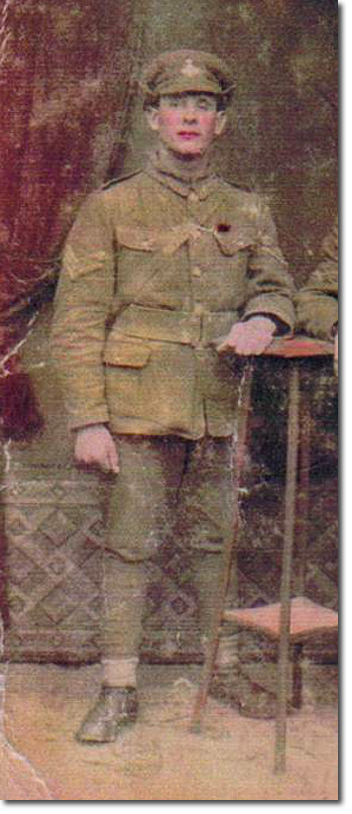|
|


|
|
Sergeant William McNally carried out numerous acts of courage, first winning the Military Medal in 1916, then winning it again with 3 acts of bravery in 1917 to add a bar. Then in 1918 he displayed great bravery on another three occasions, for which he was awarded the Victoria Cross. The first MM was won at Contalmaison on 10 July 1916 when he rescued a wounded officer and dragged him back. The second MM was won near Passchendaele on 3 Nov 1917 when he went out on three separate occasions to help wounded men or those buried by shellfire.
The citation for the VC told of McNally’s exploits while the 8th Battalion Yorkshires were fighting in Italy. On 27 Oct 1918, when the battalion were north east of the River Piave. They were held up by a German machine-gun which was firing from some buildings on the flank. McNally took it upon himself to dash towards the enemy and shoot the gun team. The gun was captured by him, and his action allowed the battalion to advance. Later, on 29 Oct, at Vassola his platoon came under fire from a German machine-gun and rifles after crossing the River Monticano. McNally ordered his men to provide covering fire while he moved around to the flank. From that position he was able to rush the enemy position, kill the gun team and capture the machine-gun. Later that day his platoon were in a newly captured ditch when they were attacked from both sides. He showed great coolness and control as he directed the fire of his men to halt the attack. The enemy sustained heavy casualties, and throughout the fight he showed great bravery and leadership. William McNally was born in County Durham on 16 Dec 1894. His father was a miner and the family lived at 12 Bude Square, Murton near Seaham. He left school at 14 to work down the pits with the pit ponies. He worked there until he was 20, doing six shifts a week. On 3 Sep 1914 he enlisted into the Yorkshire Regiment at Sunderland. He was posted to the 8th (Service) Battalion at Halton Park Camp in Buckinghamshire. There was a year’s training before going to France in August 1915. During the war he was wounded 3 times and it was the bullet in the leg that gave him the most trouble after he was demobbed in Feb 1919. However, he returned to working down the pits at Murton Colliery. July 1919 was an important month as he was married, and he also attended a ceremony at Buckingham Palace on 17 July to receive his VC from the King. In 1947 he became a timber-yard foreman where pit-props were made. He retired at the age of 65 in July 1958. He lived another 16 years, and died in his home town on 5 Jan 1976. A memorial was placed in Murton Park in Oct 1978. He left a widow and three children, two sons an a daughter. His medals can be seen at the Green Howards Museum, Richmond. |
Armed Forces | Art and Culture | Articles | Biographies | Colonies | Discussion | Glossary | Home | Library | Links | Map Room | Sources and Media | Science and Technology | Search | Student Zone | Timelines | TV & Film | Wargames